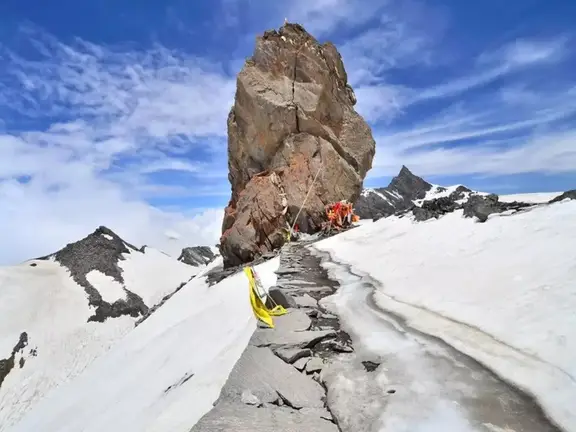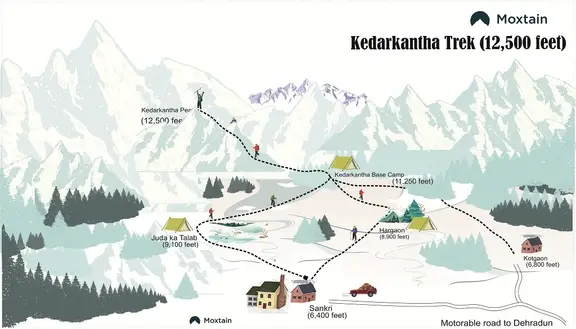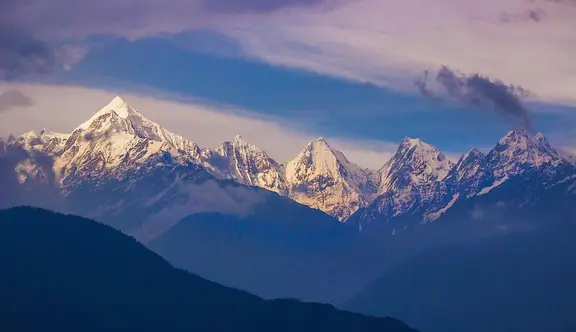Srikhand Mahadev: The Pilgrim Trail
India, the land clad with the beautiful velvety combination of history and culture has been the abode of relief to the tired hearts across the world. One such treasure of history, culture, and beauty altogether is Shrikhand Mahadev. The engrossing beauty of the natural landscape of the land of Himachal Pradesh and soul-soothing vision of the snow-covered peaks of Himalayan mountain ranges and the ardent faith in the Almighty makes thousands of Hindu pilgrims across the world take this difficult trek without a sigh and a word of complaint.
About Srikhand Mahadev Trek
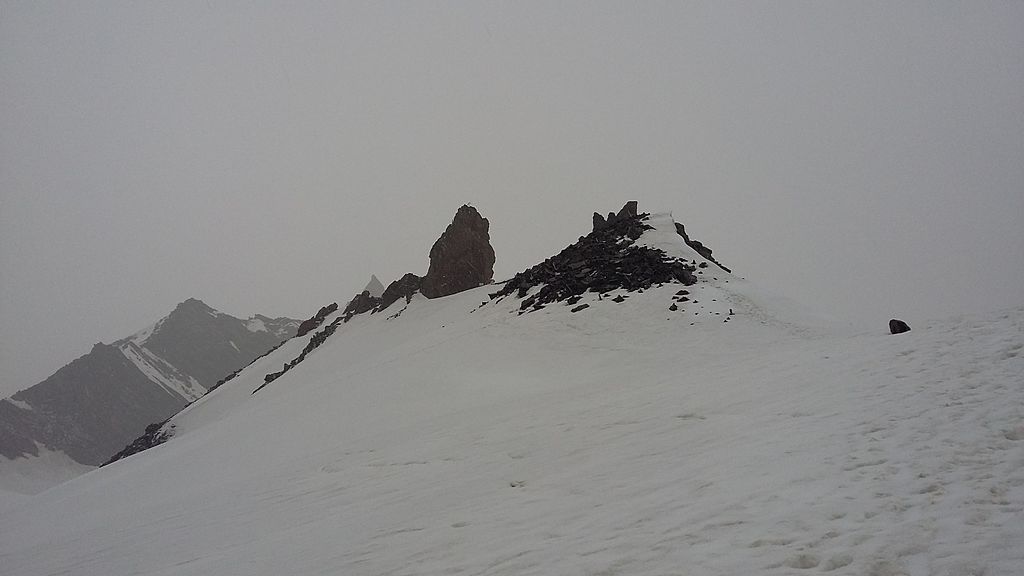
Positioned at a height of 17,150 ft. above sea level, Srikhand Mahadev, situated in the Kullu district of Himachal Pradesh, India is one of the Five Kailash, which includes Kinnar Kailash, Mani Mahesh, Kailash Mansarovar, Adi Kailash, and Srikhand Mahadev. The Shiv Ling-shaped peak is the most sacred place for Hindus across the globe which does not fail to attract swarms of Hindus every year.
The peak of Shrikhand Mahadev is, as the folklore says, is believed to be the abode of the most worshipped figure of Hindu mythology - Lord Shiva. Above 17150 ft. at the mountain top stands the shiv ling shaped rock which forms the ultimate destination of the trek and is the holy shrine the pilgrims look up to.
You may also like : Tungnath Temple trek: The third Panch Kedar
Srikhand Mahadev Trek Facts
- Altitude: 5,227 meters i.e.17,150 feet above sea level.
- Location: Kullu, Himachal Pradesh.
- Total Distance: 32-35 km on one side which is 70 km in total
- Difficulty level: Moderately difficult
- Starting and End Point: Shimla
- Trail Type: The ascend of the trek makes it way through steeply inclined forest trails and further leads to rocky moraines and glaciers. People with no prior trekking experience or medically unfit are not advised to attempt the trek.
- Base Camp: Jaon Village or Singhgad.
- Destination: Shrikhand Mahadev Peak i.e. the Shivling
Trek Guide for Srikhand Mahadev Trek
Shrikhand Mahadev Trek, the Himalayan Trek is one of the toughest and most difficult treks in the world. Clusters of beautiful valleys, ravines are always to accompany you while you make your way up to the peak of Shrikhand Kailash - another name for Shrikhand Mahadev.
The trek makes its way through both the forests and the glaciers which spices up and adds on to the adventures of the trek. Where in the first half of the trek the diverse flora and fauna of the forest trails charms the human eyes, the adventure laden trek through the snow, and glaciers cast magic spells in the second half. While on the trek, one gets to witness the celestial beauty of Himalayan Range from Parvati valley.
There are two paths from which the trek can be undertaken. One begins from the Jaon village of Nirmand and the other from the village of Arsu, but mostly the one from Jaon village side trek is highly preferred due to the immensely beautiful vision of the valleys and the cherish worthy experience it offers.
How to Reach:
- By Air:
- By Rail:
- By Road:
Jubbarhatti, Shimla is the nearest located airport. Further from there road transportation facilities are available up to the Jaon village of Nirmand from where the trek begins.
The nearest railway station is again located in Shimla. The Jaon Village from where the journey begins is 170 km from Shimla and as mentioned before, is accessible via road transport.
A well-established network of Buses run from Shimla to the Jaon village from where the yatra begins. It is a five-hour journey via road. Apart from the bus, the cab facility is also available from Shimla to Rampur (130 km), heading to Jaun village via Nirmand (Kullu), but the last 8 km from Bagipul to Jaon is a stretch of kutcha road.
From Kullu's side, the last village connected via road is Bathad in Banjar Block of Kullu district. This is the last spot where buses or cabs would drop as further up from Bathad it is a quite steep track which leads to Bashelu pass therefore one has to trek up till there. Then it opens up to the beautiful village of Saharan, from where again cabs and taxis are available to Jaon which is 210 km from Saharan. Jaon is where the trek to Shrikhand Mahadev begins.
Best Time to Visit Srikhand Mahadev
Though the trek starts witnessing human presence from early march lasting till late October, yet the most suitable time when these Himalayan trails witness the major troops of pilgrims begins from June and ends by the end of August. Furthermore, these months are also suitable due to the optimal weather conditions which makes it a comparatively safe experience.
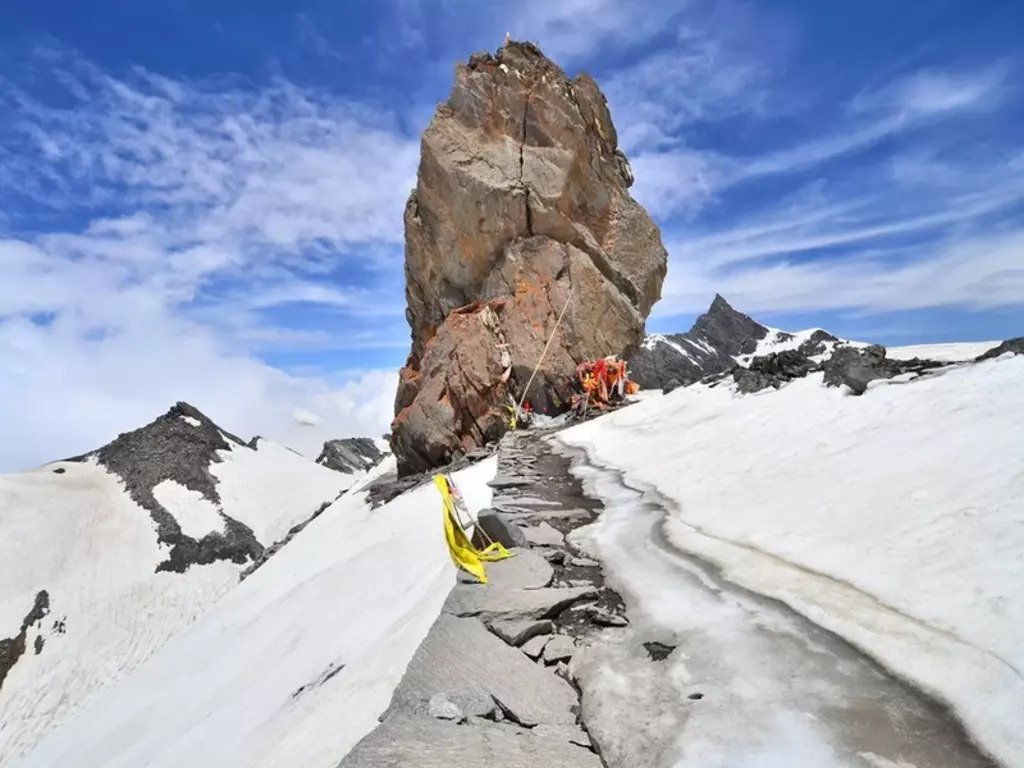
Most of the time the trek is also organized according to the Hindu Calendar, it begins from full moon day in July ( known as Ashada Poornima) and ends on the full moon day in August (Shravana Poornima). As per the weather forecast, the schedule varies every year but the dates fall somewhere between 1st to 15th July.
During this period special arrangements of safety are also made by the government due to the huge scores of pilgrims that make their presence.
Trekking offseason is not recommended as most of the time the weather conditions are not favorable which makes the trekking activity furthermore difficult and dangerous.
Apart from devotees, there are trekkers, adventurers, and climbers as well who do not miss their opportunity to witness and experience the surreal beauty of this uncivilized region.
Difficulty Level of Srikhand Mahadev
The trek of Shrikhand Kailash Mahadev is considered one of the most difficult treks across the globe. The presence of both dense forests and the fierce glaciers, through which the trek makes its way, makes the reasons for its difficulty pretty obvious.
The dense jungles begin right from Barhati Nala you cross Kurpan Khad. Further from Nainser lake, the trek to Shrikhand is quite steep and vertical which makes it much difficult. The initial patch of the lake is a glacier and is one obstacle that requires much endurance to make it through. The part followed is a trail filled with moraines and snow in patches every here and there.
Further, towards the end of the trek in the ‘Bheem ki Sidhiyan’ or ‘Bheem’s Stairs’ stretch, one is required to make his way through the huge boulders scattered across forming the path, only after crossing this one comes across the majestic view of the Shrikhand Mahadev.
As the height increases, the scarcity of oxygen is observed which makes the trek even more challenging. The extreme weather conditions encountered also add on to the list of difficulties. Though the trail is challenging, the immense faith of the devotees doesn't let it hamper their pilgrimage.
Legend Behind Srikhand Mahadev
The Hindu mythology states that there was once a human called Bhasamasur who was a true devotee of Lord Shiva and therefore he meditated for several years to please him, eventually Lord Shiva got pleased and as a token gave him "Bhasma Kangan" which were believed to possess supernatural powers. Due to immense pride, Bhasmasur made an attempt to use the very token against Lord Shiva himself, when Mahadev ( Lord Shiva) vanished into a cave and was later seen on the mountain top which is today established by Shrikhand Mahadev. Since then it has been a widespread belief that it is the abode of Lord Shiva.
Another legend associated with the place is that of Pandavas. It is believed that Pandavas had also taken a pilgrimage up there.
Srikhand Mahadev Trek Itinerary
The general time period involved for trekking from Jaon village up to Shrikhand Mahadev takes an average period of eight days, in which one not only rushes up to the destination but enjoys the journey to the fullest as well. The team would meet you at Shimla from where the trip starts and would part from you at Shimla itself after the trek is over.
Day 1 - Shimla to Jaon. trek to Singhgad
On the right bank of the Rivulet kurpan which has its origin at the bottom of Shrikhand Mountain Range, is situated a small village called Jaon from where the trek begins. Jaon is 170 km away from Shimla and is an approx 3-4 hours drive. The trek from Jaon to Singhgad is a short 3 km trek which takes about one and a half hours to complete. Singhgad village is one holy place where the devotees offer their prayers before they set out on the major trek.
Day 2 - Singhgad to Thachru
The trek further up from Singhgad observes a sudden ascent up to Barathi Nalah which at a height 7,283 ft. At this point, two rivulets come together to form Kurpan. Ahead of this, there is again a sharp ascent to thachru which is at 11,318 ft. This takes around 1-2 hours to reach. While on the way to Thachru one gets a glimpse of Kullu Himalayas.
Day 3 - Thachru to Kaali Ghat to Kaunsha
The next destination after Thachru is Kaali Ghat which is a vertical climb that stretches for about 3 km which takes one and a half hours to complete. Kaali Ghat at 12,778 feet. allows you to take in from there the 360-degree view of the Himalayas.
From Kaali Ghati, the trek further leads to Bhim Talai which is an average 30 minutes trek. Bhim Talai, located at a height of 11,299 feet. From Bhim Talai to Kunsha, the trek is a stretch of 3 km and is a smooth trail and therefore it takes a short span of one and a half hours to cover.
After crossing the lush green patch of meadows, the first glacier of the trekking journey is encountered which is approximately 500 metres in height and 80 meters in width. The destination Kunsha, positioned at an altitude of 12,746 feet is a place surrounded by beautiful waterfalls.
Day 4 - Kunsha to Parvati Bagh
Trek from Kunsha to Parvati Bagh makes its way through Bhim Dwar. Kunsha to Bhim Dwar again is a trek of 3km which is accompanied by the uneven terrains. This trek takes a time of 2 hours. While on the way the rare flora witnessed is a major attraction. Bhim Dwar is the spot that acts as the resting ground for devotees.
At 3km from Bhim Dwar, is Parvati Bagh, at 13,622 feet and it takes 2 hours to reach there. On the way is a waterfall after crossing which, there is a steep climb of 2.5 km up to Parvati Bagh. Nestled among the heartwarming mountain ranges, this spot is just below the Shrikhand Mountain.
Day 5 - Parvati Bagh to nain Sarovar and back.
From here the tough trek comes into the picture. There is no grassland beyond Parvati Bagh, the trek makes its way only through moraines and snow. Nain Sarovar is a lake situated at a high altitude of 14,527 ft. and is about one and a half hours from Parvati Bagh.
The trek is characterized by gentle snow and boulders. According to the myth when goddess Parvati was waiting for God Shiva and he didn’t show up so Goddess Parvati started weeping and tears fell in this place and formed a lake here. After spending some time there, one can retreat back to Parvati Bagh.
Day 6 - Parvati Baag to the Summit, the return
This is the last day of the trek, before reaching the ultimate destination. Parvati Bagh to Shrikhand Mahadev is only a 6 km stretch which takes about 4 hours to reach. On the way, one encounters Bheem Bailee, which is a sacred place at an altitude of 15921 ft. From there it takes half an hour to reach Shrikhand Mahadev. There are seven small peaks that one has to climb before reaching the summit.
Once the peaks are crossed, one finds himself standing across the majestic Shivlinga of Shrikhand Mahadev. One can see Kinnaur Himalaya from one side and Kullu and Shimla mountains from the other side.
After experiencing the awe-inspiring beauty and aura of Shrikhand Mahadev, the journey downhill begins, making its way down to Parvati Bagh.
Day 7 - Parvati baag to Thachru
Descent from Parvati Bagh makes its way via Bheem Dwar, Kunsa, Kali Ghati, Kali Top & night stay in Tents in Thachadu. It is a 13km trek downhill and takes approximately 6-7 hours. The trail gives a window to the rare variety of fauna that’s found in the region thus giving an exquisitely beautiful view. The difficulty level also decreases as one descends.
Day 8 - Thachru to Jaon and shimla
The final stretch, where the pilgrims make their way back to Jaon, along Kurpan river from where they began the trek via Bharati Nala and Singhad. The descent is moderate going through the dense forests with the scenic beauty of Apple Gardens. Following the same path, the trek comes a complete circle at Shimla, where our team bids you goodbye, loading your pockets with some most amicable experiences.
The magnanimous majestic mountains of the Indian Himalayas with its diverse flora and fauna, embracing panorama, serene snow-clad peaks, bounteous beauty, and tranquil environment is one destination which has been entrapping the hearts of all from nature lovers to adventure junkies. The historical and mythological heritage nestled in the lap of the Himalayas has been the major retreat destination for everyone from pilgrims to trek enthusiasts across the globe.
Though the trek of Srikhand Mahadev is one challenging laden trek, the experience is such a cherish-worthy experience that each one should live at least once in their lifetimes.



